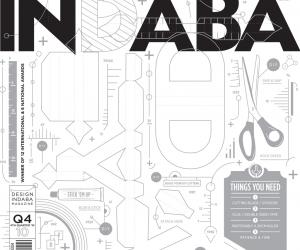First Published in
Feel it, imagine it, do it and then share it. That’s the premise of the Design for Change contest that’s injecting an “I can” attitude into the lives of school children in India.
Now in it’s third year, with 32 000 schools and some 100 000 children participating, the Design for Change contest asks learners between the ages of six and 18 to identify a problem in their community, design a solution for the problem and take a week to implement it. Projects and solutions ranging from the world’s first child-friendly zebra crossing to “Collect Plastic Bags Week”, putting pressure on authorities to ban child marriages, keys to combat loneliness, ways to avoid transgender discrimination and even a Stop Spitting Campaign have proved that Design for Change has no limits.
According to designer, educator and design activist Kiran Bir Sethi, the campaign is fighting the “don’t know, don’t care” attitude that is especially prevalent among the youth in India. Design for Change is about using design thinking and skills to promote a sense of citizenship that encourages the type of thinking and behaviour that supports lifelong personal and community development. “Design for Change is based on a philosophy that advances transformative student participation, promotes the training of exceptional teachers and drives child-focussed innovation,” says Sethi.
This is also the philosophy that underlies the curriculum at Sethi’s Riverside School in Ahmedabad where the Design for Change initiative originated in 2007. An Indian education success story that’s inspiring learners, teachers, parents and communities across the globe, Riverside School’s approach to education is not textbook-tight but built around a system that employs aspects of design thinking to nurture curious, independent, competent and forward-thinking learners and citizens.
It’s what Sethi calls a “common sense” approach to learning. She explains that too often education is about work from a textbook to derive some right or wrong answer in a given period of time. What would happen instead, if children were motivated to consider the process of problem solving and not just rush to find “the answer”? What if children were equipped to ask “what if?” and “why not?” These were the questions that made Sethi realise that the overhaul that school education in India needed could take its cue from design thinking.
A graphic designer by training, Sethi understands the universality of design thinking and how with various cuts, tweaks and additions it can be ideally altered for school education. Further convinced that if education prioritised learning in a real world context, children would not only be more motivated and interested, but that it would have a trickle-down effect into the communities of India, Sethi opened the doors to her own school in 2001.
At Riverside, teaching is about finding a creative way to apply common sense. As such, Sethi and her colleagues have developed a three-stage “Learning Journey”. In the first stage the learner becomes aware of ways to make the complex world simpler by developing various competencies, including craft skills, numeracy and data interpretation, as well as a healthy identity that allows for a balanced way of interacting with the world. The second stage is where the learner is equipped with strategies to become more independent and to live more consciously. Empowerment is the characteristic of the third stage, where the learner is driven to solve problems and fashion products.
Sethi says that the successful implementation of these objectives depends on support and encouragement from parents. “It’s of crucial importance that parents are involved in this process and almost become co-teachers. We have regular events where we meet with parents. There have been numerous incidents where we have seen how parents have also been empowered to be better parents and citizens through programmes at the school.”
Redesigning and managing classroom aims and objectives is another key area in Sethi’s curriculum. Time needs to be made to allow for analysing work and the process involved in it. In this way children will learn about problem-solving and designing systems. Sethi explains that design thinking makes one more conscious of the process and takes the process away from the product.
For Sethi this comes down to a dual process that involves respecting the child as a learner, while also nurturing the well-being of the teacher. She is adamant that the latter is especially crucial. “You can only infect others with what you already have, so if you’re tired, overworked and disillusioned, what are you infecting the children with?”
“Infection” is a good word for Sethi, an important one for Riverside and the basis of the Design for Change contest. Believing that passion and inspiration are contagious, Riverside School functions like a lab that prototypes and refines design processes that “infect” the minds of children with what Sethi describes as the “I can” bug.
With the “I can” bug, the boundaries between school life and home life become blurred. Children are made to understand and apply their learning in their communities by thinking about the issues in their own lives, their families and their communities. By doing so, they become involved in the various spheres of public life from an early age.
“When learning goes beyond the walls of the classroom, then children become the change we want to see in the world and infect others with their sense of social responsibility,” concludes Sethi.












